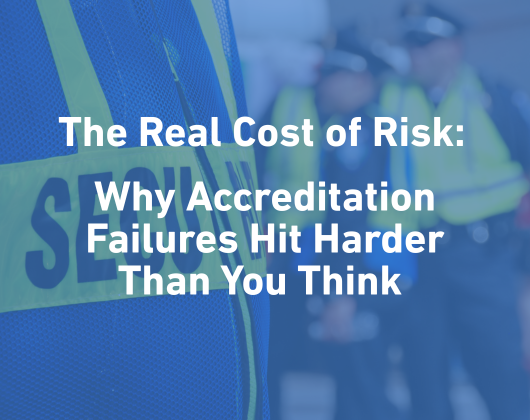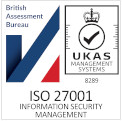If you don’t have an accreditation process in place it can seem like a daunting task. Even more so as it is unlikely you will have the right systems to help eliminate a lot of the administration that comes with it. To that end, a well thought out accreditation procedure can have a major impact on the efficiency and safety of your event or venue. So where do you start? Here are our 6 steps to help you get started.
1 Look at the big picture – what do you want accreditation to achieve?
Accreditation is not just about producing badges. It can:
- automate and simplify labour-intensive tasks
- improve operational efficiency and event security
- make sure you process data legally
- helps prevent against the insider threat and stops you from employing illegal workers
- save you time and money
But you need to decide on your priorities as this will affect who needs to be involved and how the entire process is set up. Do you need a solution to collect and manage your data more effectively? Is the priority to make the movement of staff around the event more efficient with access controls? Maybe you want to reduce threat levels by doing background checks? Do you want to make the process of accreditation much faster?
Maybe you want to achieve all of these things, but make sure you decide what you want your accreditation procedure to do before you do anything else.
2 Consult all departments affected
Keeping a venue or major event safe is a team effort and your accreditation procedure will need input and buy-in from venue and event managers, security, IT and operations teams. If everyone understands the benefits of a better accreditation process and knows who is being accredited and why it will save everyone a lot of questions further down the line.
3 Map out your access control zones
Visualise your venue. Get a floorplan and map out who needs access. Where do they need to enter? Where do they need to get to? Where should they not be allowed to go? Consider everyone that isn’t a ticket holder – building contractors, catering teams, stewards, security officers, venue staff, cleaners, officials, players, event organisers, retail outlet staff, volunteers, members of the media and VIP guests.
Use this information to map out your access zones and areas that need controlled entry, and build a list of who needs accrediting and what access permissions they should have.
Think about how you want this information displayed on the badge for quick visual checks but also how this can work with the static or mobile access control solutions.
4 Find a software supplier
Gone are the days of spreadsheets, endless emails and merging sets of data in order to get a badge printed or issuing an un-personalised wristband. To do accreditation effectively and efficiently, you need the right software from a technology company that specialises in accreditation
Here are some things to consider when comparing solutions:
- What do you need the system to do? What functionality do you need?
- What experience do they have of similar projects?
- Is the system cloud-based so you can access it from anywhere, from any device?
- How do they keep data and files secure?
- What level of customer support can you expect? How quickly do they respond to client queries, and what time zones do they operate in?
- Can they integrate with other systems, such as access control, workforce management and security services?
- Do they have partnerships with other software, consumable and hardware suppliers?
- What do their other clients think? If their clients are happy, they will welcome the chance for you to talk to them
- How long will it take to get the system set up?
- Do they have an in-house development team that can adapt the platform for your future needs?
- How much will it cost? And is that cost inclusive, there is nothing worse than being hit with additional extras at each step of the way!
5 Build your accreditation team
Find yourself an owner of the accreditation process. They need experience, they need to work well under pressure, they need to be a good project manager, and they need to be able to have conversations at a senior level and across all job functions. Many experienced Accreditation Managers operate on a freelance basis as they move from event to event. If you find this to be the case, then consider employing someone temporarily to develop and implement your accreditation procedure, and build a team who can then manage it on a full-time basis in the future.
6. Work hand-in-hand with your technology partner
A good accreditation solution provider will have experience in working across a range of sectors, events and venues and will have a knowledge of how all of these have run their accreditation process. They will know what has worked well across their other clients and will be able to share best practices, so work hand-in-hand with your technology provider to not just set the system up to your requirements but to gain their insight to make your procedures as robust as possible.





![EAS-Accredit-300dpi[22]](https://www.accredit-solutions.com/wp-content/uploads/2024/01/EAS-Accredit-300dpi22-300x156.png)

